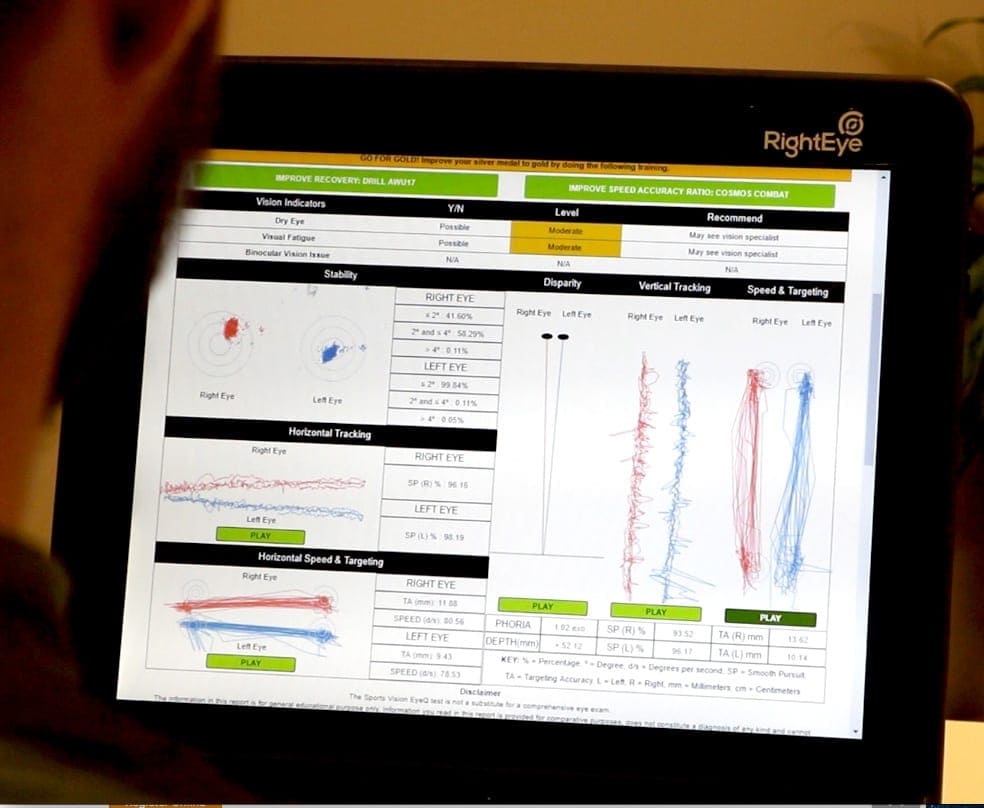BETHESDA, MD, Aug 28, 2019 —RightEye LLC, an award-winning health technology company using eye tracking to improve vision performance, today announced the results from a recent study published in the peer-reviewed journal Concussion that shows how eye tracking technology accurately measures deficits in certain eye movements that result from a concussion. The data provided by eye tracking technology offers an objective, reliable and quantifiable way of differentiating between individuals with different severities of concussion, as well as providing guidance on the path to recovery.
Given the limitations and inconsistencies of today’s most common TBI screening protocols, there is a need for more objective and specific methods to assist doctors in the detection and diagnosis of TBIs. Unlike conventional “follow-my-finger” screening methods that rely solely on a practitioner’s observations, RightEye’s eye-tracking technology quickly delivers precise, objective and quantifiable eye movement data by surveying the eye several times per second and recording its movement. The technology uncovers even the smallest eye movement deficits that are often missed using traditional/analog screening methods, such as vestibular/ocular-motor screening (VOMS).
The study found that functional vision tests using eye-tracking technology are a useful, precise and objective measure of underlying neurological health that indicates the presence of TBIs. Furthermore, particular metrics have shown promise in being able to differentiate mild, moderate and severe TBI cases.
“Concussions are a significant international public health concern, yet the methods currently used for its detection are manual and subjective. In addition, not all concussions are the same, yet patients usually lack a clear understanding of the severity of a concussion as well as the road to recovery. Eye tracking provides doctors and other healthcare professionals with a fast and objective tool for assessing concussions and other TBIs,” said Dr. Melissa Hunfalvay, co-founder and chief science officer, RightEye, LLC, and a co-author of the study. “This study demonstrates that digital eye tracking tests are capable of providing doctors with the data they need to quickly and precisely uncover abnormal eye movement behavior that can be associated with concussions of varying severity.”
Eye tracking can be used by a wide range of medical professionals, ranging from optometrists and other vision care providers, to neurologists and primary care physicians. Beyond supporting doctors in the detection and diagnosing of concussions, eye tracking technology can be used to assist in determining appropriate treatment programs, and aide in determining when it is safe for patients to return to normal activity after sustaining a concussion.
“I recommend baseline eye tracking screenings for everyone, especially children,” said Tanya Polec, OD, FCOVD, Sports Medicine Rehabilitation and Concussion Center (SPARCC) and VQ Learning Sports Rehab, Tucson, AZ. “The reality is that a TBI can result from a car accident, playing sports, or a playground fall. All too often, these ‘stealth concussions’ go undiagnosed and untreated, with severely negative consequences that affect adults’ ability to perform routine tasks and kids’ ability to learn and function in school.”
“Concussions remain one of the most difficult neurological issues to detect and accurately diagnose,” said Dr. Mark Baron, neurologist at the Virginia Commonwealth University Parkinson’s Disease and Movement Disorders Center and Deputy Director of the Southeast Veterans Affairs Parkinson’s and Movement Disorders Center (PADDREC) in Richmond, Virginia. “Sadly, a significant percent of patients who have sustained a mild injury go undiagnosed. Having a tool that allows doctors to quickly and objectively analyze the neurological health of people could help uncover countless hidden concussions and empower doctors to create tailored treatment plans in line with the severity of the injury. Critically, having rapid access to quantifiable eye-tracking data about the neurological health of people will allow doctors to precisely monitor treatment progress and confidently approve individuals to return to their normal activities.”
The Study
This is the first study to systematically examine the use of eye-tracking technology for researching differences in horizontal and vertical saccades between people with no history of TBI and patients with a clinical diagnosis of TBI. One hundred ninety-five (195) subjects were recruited from eye health clinics in the U.S. to take part in the study. All subjects performed a horizontal saccade (HS) test and a vertical saccade (VS) test, using RightEye’s FDA-cleared eye-tracking technology. Among these subjects, there were 64 mild TBI, 57 moderate TBI and 23 severe TBI cases that were clinically verified by a board-certified neurologist or neuro-optometrist according to medical diagnosis guidelines. There were 51 subjects reporting no history of TBI. The subjects with TBI had sustained their head injuries no more than 30 days prior to testing.
Over the next five to 10 years, it is predicted that the use of simple, user-friendly eye tracking tests, similar to the ones used in this study, will become commonplace in helping healthcare professionals diagnose traumatic brain injuries and their severity, as well as monitor patient recovery from this condition. Given that these tests are simple and quick to administer, investigations into the use of this technology in sports settings may prove fruitful, especially for the purposes of return-to-play decisions following an athlete’s TBI diagnosis.






